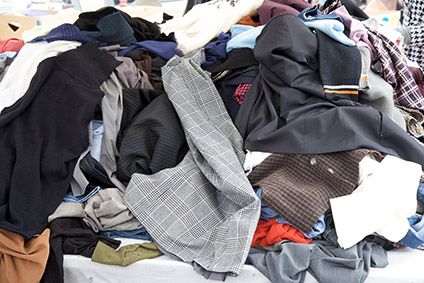
The secondhand clothing market is expected to hit US$64bn in the next five years, according to a new report, and grow to almost twice the size of the fast fashion market by 2029.
The report by online resale marketplace ThredUp shows that while the coronavirus pandemic weighed on apparel sales, the secondhand market looks set to soar.
Last year, the resale market grew 25 times faster than the broader retail sector. Between 2019 and 2021, online secondhand is expected to grow by 69%, while the broader retail sector is projected to shrink by 15% as consumers seek more bargains from home.
The report found that four in five people are open to shopping secondhand when money gets tight, while 79% of consumers plan to cut their apparel budget in the next 12 months. Two in three people who have never sold their clothes say they are now open to it, with the number one reason to make money. While around 50% of people are cleaning out their closets more than they were pre-Covid.
“The next normal has started to emerge, with consumers indicating they will adopt long-term behavioural changes that will last beyond Covid,” says McKinsey & Company.
In the next 12 months, the secondhand market will account for 44% of spend, while Amazon Fashion will take 37%, and off-price 34%. These are the only sectors expected to gain customers.

US Tariffs are shifting - will you react or anticipate?
Don’t let policy changes catch you off guard. Stay proactive with real-time data and expert analysis.
By GlobalDataOver the next five years, this percentage will increase to 52% for secondhand, while sustainable fashion will account for 43% as consumers look more consciously at how they shop. Amazon Fashion will account for 37%, and off-price 36%, while fast fashion will account for just 13%.
The secondhand market is expected to double its market share in the next ten years, and grow to almost twice the size of fast fashion at 17% and 9%, respectively. Off-price is projected to hold a 19% share, and mid-price a 13% share.
“For all the challenges Covid posed to our assumptions about consumer behaviour, one thing is clear: consumers everywhere are prioritising value and accelerating the shift to thrift. When times get uncertain, we all focus on our family balance sheet. Brands whose core proposition delivers value and convenience have the opportunity to gain share. Amazon, off-price, and resale are emerging as winners,” says ThredUp president Anthony Marino.
“This year’s Resale Report, unlike any we’ve published, captures insights from two different consumer worlds: pre- and post-Covid. We hope it sparks rich dialogue about the enduring shifts underway and the forces fueling the future of resale.”
The report found that around 70% of women have, or are open to, shopping secondhand, from 45% in 2016, while young shoppers are adopting secondhand fashion faster than any other age group. And nearly 2.5-times more consumers plan to shift their spend to sustainable brands.
The top ten brands with the best overall resale value, according to the report, include Frye, Tory Burch, Kate Spade, Coach, Patagonia, Longchamp. While the top resellable categories are bags, outdoor clothing and dresses.



